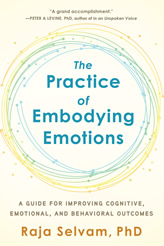by Rae Johnson
For much of my professional life, I have been fortunate to do work that I love; work that is profoundly meaningful to me, and that I consider to be “who I am” as much as it is “what I do”. Early in my career, that professional identity centered on being a somatic psychotherapy practitioner. Like many of the readers of Somatic Psychotherapy Today, my life has been enriched and forever transformed by my own experiences as a somatic psychotherapy client. As a therapist, I understood my clinical work as not just potentially “life-changing” for my clients, but “culture-changing” as well. I lived and breathed the work, and brought a somatic perspective to my whole life – how I moved, how I interacted with others, and how I understood the world.
Later in my professional life, I had the opportunity to broaden my focus to include teaching somatic psychotherapy graduate students and conducting research into the various ways a somatic perspective might inform a range of topics – for example, working with trauma survivors, integrating somatics and the expressive arts, and transforming the process of teaching and learning. So now when people ask me what I do for a living, I am much more likely to describe myself as a somatic scholar/activist than a somatic psychotherapist. This shift in professional identity is important in understanding how and why I came to write Embodied Social Justice, because like my previous books (Elemental Movement, 2000; Knowing in our Bones, 2011), this book is based on original research. Although I have tried to write it in a way that engages and inspires readers, at its heart it is research document.
Like all research, it aims to generate new knowledge by building on what is already known about an identified problem, synthesizing that existing information in novel ways, and then asking strategic questions to fill in the gaps between what we already know and what we need to know to better address or resolve the problem.
In the case of Embodied Social Justice, the research emerged out of my somatic psychotherapy practice with members of marginalized and subjugated communities. As I describe in the book’s introduction, I found myself making connections between the somatic “symptoms” of my clients (most of whom experienced racism, sexism, ableism, and/or homophobia on a daily basis) and the diagnostic criteria for post-traumatic stress disorder. Like me, they had no known history of acute trauma but were manifesting many of the somatic indicators of trauma – chronic hypervigilance, intrusive body memories, and somatic dissociation. At the time, there was no literature establishing a correlation between oppression and trauma, so I set out to discover for myself how the body was affected by oppressive social conditions, and how the body might serve as a resource in untangling and resolving the damaging effects of living in an unjust social world that values some human beings less than others.
My research wound up spanning more than a decade, as I worked alone and with colleagues to interview people about their lived, embodied experience of oppression across a wide range of social categories – including race, sex, gender, age, religion, ethnicity, physical ability, and body size. In these interviews, I asked participants how being oppressed informed how they related to their own bodies, how it shaped their body language, how it affected their body image. What I learned confirmed my hunch that oppression could be considered a form of chronic trauma. My findings also pointed to ways that our bodies not only held the damage that oppression causes, but were also sources of knowledge and power. The more my research participants explored the somatic impact of oppression in their own bodies, the more their bodies served as trusted resources in the task of transforming and healing the damage that oppression caused, and the more they experienced their bodies as strong, powerful, and worthy of respect.
Because I wanted the voices of my interviewees to come through clearly in my study, I crafted narratives from our interviews, and they appear in the book as a series of “body stories”. These stories describe what I learned through my research, and point the way forward to how we might begin, individually and collectively, to transform the embodied experience of oppression. In the years since those initial interviews, I began to develop a model of working with the somatic impact of oppression, and that model is described in the third section of the book, directly following the stories of my research participants. It is written so that somatic psychotherapists can use the model with their own clients, and I have tried hard to make the steps practical and straightforward. I have also included a section on community resources for practitioners who would like additional professional training on this important topic. It has been heartening to see how many conferences, books, and training programs on embodiment and oppression have emerged in the years since I first began this project, and I am pleased to be able to direct readers to some of them.
Like many of us in somatic psychotherapy, I have been personally transformed by the liberatory capacities of body-centered work, and impressed with the commitment to social change that mobilized so many of our early founders and innovators in the field. As a practitioner and educator who shares that commitment, it is my dearest wish that issues of social justice will return to the forefront of our collective professional agenda and become an essential part of the conversations we have with one another about the power of our work. My hope is that Embodied Social Justice might be one catalyst for those conversations.
Rae Johnson, PhD, RSMT, is a queer-identified social worker, somatic movement therapist, and scholar working at the intersection of somatic studies and social justice. They chair the Somatic Studies in Depth Psychology doctoral program at Pacifica Graduate Institute in Santa Barbara, California.
You can purchase Dr Johnson’s book here. And, yes, if you buy a book from our website, we do receive a few pennies, which we gratefully appreciate. Your “donation” allows us to continue publishing top notch reflections, reviews, articles and interviews.



